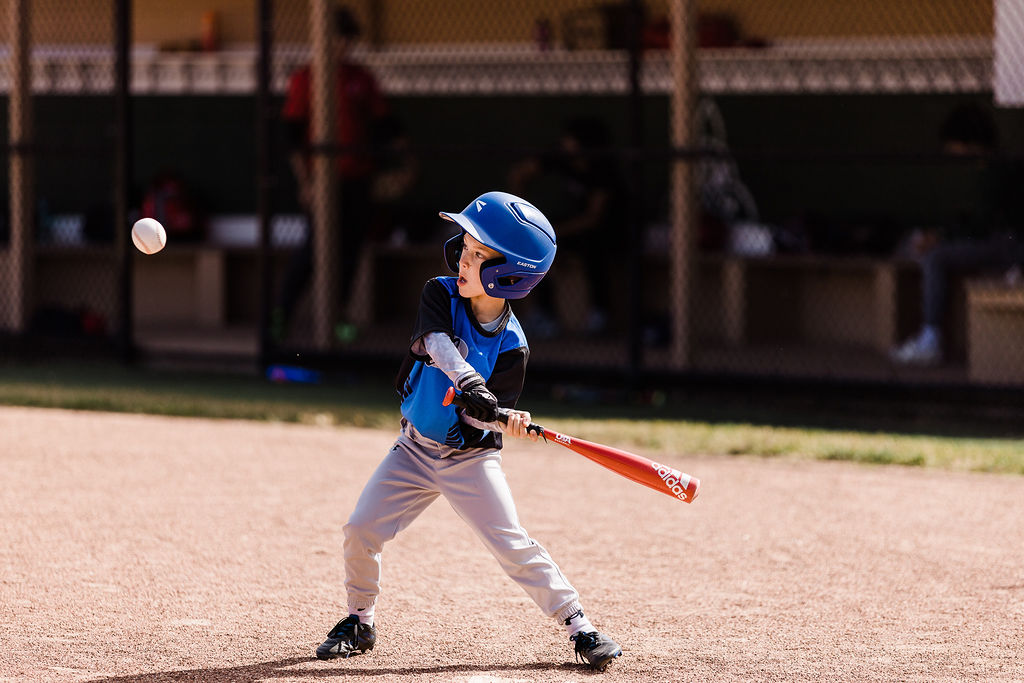How to Choose a Baseball Bat
Baseball bats come in various sizes. There are different lengths, weights, and materials to choose from, which can make buying the right baseball bat complicated. Here are the considerations to keep in mind as you search for the perfect bat.
Age and League Requirements
Before the upcoming season starts, find out what guidelines your child’s baseball league follows. The most common governing bodies for baseball bats include:
- USABat: This standard creates wood-like performance in youth bats while still maintaining a lightweight product.
- USSSA: The United States Specialty Sports Association provides energy-transfer bat regulations for the leagues they govern.
- BBCOR: Batted Ball Coefficient of Restitution controls the amount of energy lost when a bat makes contact with a ball.
Every baseball league follows a specific bat standard for its equipment regulations. Check with your child’s coach to ensure you purchase the proper bat. As a general guide:
- Tball bats typically work for ages 4 to 6.
- Baseball bats that meet USABat or USSSA standards will usually work for ages 7 to 13.
- Players ages 14 to 18 will likely need a BBCOR-certified bat.
Baseball Bat Lengths
Once you know what bat standards to follow, the next factor is determining the right measurement. Too long, and your child’s swing mechanics may be off. Too short, and the bat limits the amount of plate coverage.
Bats range from 26 inches to 34 inches long. To help you find the correct length, try one of these methods:
- Method 1: Have your child stand with one arm out to the side. Align the bat with their arm so their fingertips are flush with the end. If the knob sits in the middle of your child’s chest, the bat is the proper length.
- Method 2: Put the tip of the bat on the ground like a cane and have your child stand next to it with their arms down to the side. If the knob reaches the center of their palm, the bat is the proper length.
Baseball Bat Weights
The best weight is based on your child’s upper body strength. Be care when choosing a bat’s weight as it can affect the mechanics of your child’s swing. When a bat is too heavy for the hitter, the hitter typically swings slower or behind the ball, and can result in a swing and a miss. A heavy bat can also cause a player to drop their hands or swing under the ball, as it’s too heavy for them to lift through the entire swing. If you choose a bat that’s too light, then it can result in swinging too quickly and take away some of the power of the swing.
Test baseball bat weight with one of the following methods:
- Method 1: Have your child swing the bat a few times. If it starts to feel cumbersome or drops slightly, it’s probably too heavy.
- Method 2: Have your child hold the bat’s grip and lift their arm until it’s parallel to the floor. If your child can’t maintain this position for at least 30 seconds, try a lower weight.
Baseball Bat Materials
Bats come in four main varieties:
- Wooden bats are often made of ash, maple, birch, or bamboo. Each wood species offers slightly different qualities. For the best performance, the bat must be broken in.
- Alloy bats are made of aluminum. They have a smaller sweet spot than wood bats, but no break-in time is required. Alloy bats also perform well in any temperature, last longer than wood bats, and are more affordable.
- Composite bats are made of multiple wood species or wood and a non-wood material. They have a larger sweet spot and send less vibration to the hands, reducing the sting of a mishit. Composite bats require a break-in period of 150 to 200 hits, and they’re more expensive than wooden or alloy bats.
- Hybrid bats are made with composite handles to minimize vibration and alloy barrels to avoid any necessary break-in time.
One-Piece vs. Two-Piece Bats
The flex and energy transfer of these two build options vary significantly. One-piece bats are a single, continuous piece of metal. There is little flex in the bat, resulting in little energy loss. This produces a balanced, powerful swing, but poor hits can sting the hands.
Two-piece bats involve welding the barrel and handle together. This split design creates more flex for faster bat speeds and also withstands vibrations more effectively. This makes it a good option for players looking to curb that stinging feeling.
Final Notes
The way a bat feels in a player’s hands is more important than any performance review. That’s why it’s important to let your child test out bats in real life. Visit a sporting goods store and let them practice swinging. Whichever length, weight, and material feels the most natural is the one they should use. Though keep in mind, your child will automatically be attracted to the bats that “look cool” no matter how big the bat is, so it make take some convincing that it may not be the right bat for them. Patience is key for the bat buying process.
Sign Up for Youth Baseball or T-Ball
i9 Sports®® offers age-appropriate baseball instruction, with players as young as 3 starting off with t-ball. Our baseball programs help children learn the game and develop fundamental skills while gaining an appreciation for sportsmanship values like respect and teamwork. We believe this is The Way Youth Sports Should Be®! To learn more, please browse our programs or find an i9 Sports® office near you.
